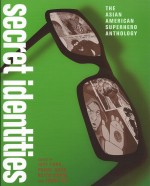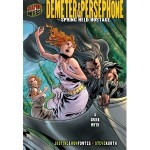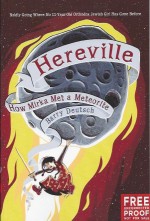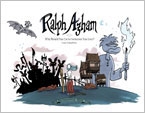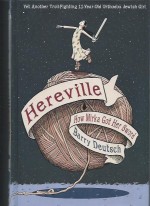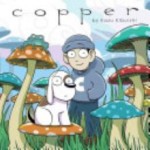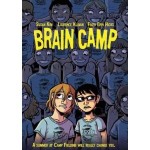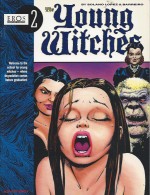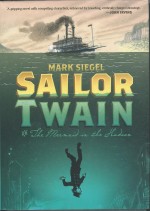
By Mark Siegel (First Second)
ISBN: 978-1-59643-636-7
Win’s Christmas Gift Recommendation: genuinely unmissable… 10/10
Even after decades in the business every so often something comes along that makes me feel like a drooling delirious fanboy again. This time it’s the superb hardback compilation of a fabulous weird tales webcomic that’s certain to become a certifiable classic.
Mark Siegel was born inMichiganand raised inFrance; one of those story-obsessed prodigies who began drawing wonders as a kid and never grew out of it… only better at shaping them.
After a childhood concocting yarns, comics, cartoons, posters and animated films he returned to the USA to study Creative writing and Fine Arts at Brown University. Upon graduation he stayed stateside, tentatively beginning life as a jobbing designer/illustrator.
He got his big break with the award-winning strip-book Seadogs, written by Lisa Wheeler. This was followed by Long Night Moon, To Dance, Boogie Knights and more.
Increasingly intrigued and fascinated by the history and geography of theHudson RiverValleywhere he lives with wife and creative collaborator Sienna Cherson Siegel, the artist began to craft a lyrically beguiling mystery tale from the glittering, sophisticated and callous brutal days of the Riverboats which once plied their glamorous trade along that famed and fabled watercourse. This he published online at sailortwain.com.
Rendered in mercurial melancholic charcoal tones, Sailor Twain tells the tale of a poet who has lost his muse and becomes a riverboat captain to pay for his invalid wife’s medical treatment.
It’s also the tale of French wastrel Dieudonné who inherited his entrepreneurial older brother’s exclusive, high society river boat business when the inspirational Jacques Henri de Lafayette had a breakdown and vanished…
…And finally, it is the sad and sobering tale of a lady who could not accept her place or fate in a savagely proscribed and repressionistic masculine culture…
Set in the transitional era of 1880s New York where and when science and rationality began at last to supersede wonder, mystery and romance, and specifically during the months May to December 1887, the story opens with an enigmatic meeting in ‘Overture’ before ‘Part I: Twain’s Secret’ begins with ‘The Frenchman’s Steamboat’ as the diligent captain of the luxurious Lorelei recalls how the dissolute young European assumed control of a hugely profitable touring business after the elder Lafayette vanished. Also introduced are below-decks crew Horatio and Aloysius, Negro engineers who know more of the route’s peculiar history than they’re willing to share in ‘An Unlikely Survivor’…
The new owner seems a bad sort. In ‘A Prayer Down Below’, he demonstrates an indecent and almost unhealthy interest in bedding women, but after Twain rescues ‘The Mermaid in the Hudson’ and secretes her battered and wounded body in his cabin the trusty salt’s judgemental world is forever changed.
‘Beaverton’s New Book’ introduces another intriguing strand as a publicity-shy yet popular author’s latest sensational publication offers to reveal the “Secrets and Mysteries of the River Hudson†– everything from love-sick ghosts to the cure for a mermaid’s siren song – to both Twain and his increasingly odd employer.
The Captain, obsessed with ministering to the silent, wounded creature hidden in his cabin, is amazed when he is asked to post ‘Lafayette’s Letter’ to the enigmatic author, whilst in ‘South’s Promise’ Lafayette’s debauched dalliances multiply manically as Twain remembers his far-off wife and how her beautiful voice was stilled by disease. Nevertheless ‘Pearl’s Song’ is slowly being forgotten as the seaman becomes increasingly closer to the mythical beauty recovering in his bunk…
The lascivious Frenchman is rapidly losing touch with reality, constantly throwing messages in bottles to the murky roiling river waters as ‘Three Prisoners’ sees the now voluble sea-woman eagerly communicating with Twain just as Lafayette takes him into his confidences over his amorous actions…
Inspired again to write, Twain’s fevered imagination is sent reeling when he realises his employer is seeking ‘The Cure for Mermaids’ and, thanks to the Beaverton book, discovers his uncanny charge’s origins in ‘South of the North River’…
Entranced in a way no other man has been, the worthy Captain is utterly unaware of how the situation is spiralling madly in ‘The Missing Muse’ after which ‘Part II: Camomille’ takes a closer look at the louche Lafayette when ‘The Beaverton Revelation’ exposes the author’s shocking identity and New York Society gathers itself to take its chilly revenge in ‘Ink Stains’…
Lafayette’s carnal campaign hits a strange snag in ‘“The Dame’s Audacious‒, leading to most peculiar dinner conversation in ‘Eclipse’ and the culmination of long-laid plans in ‘Sevening’, all whilst Twain finds to his horror that his submersible companion has vanished in ‘Enticement’.
Before the tragedy moves towards the impossible endgame, she suddenly returns to assuage ‘The Strains of Absence’ prompting fantastic delirium when ‘Twain Dreams’…
‘Part III: World’s End’ moves fully towards otherworldly experiences ‘In the Other Realm’ of ghosts, drowned men and stranger things where the desperately querulous Twain finds ‘The Lost Brother’, learns of ‘A Lady Beguiled’ and discovers the power of ‘The Chained Heart’ as his tumultuous affair ploughs on to an astonishing denouement…
It all comes crashing down in stormy disaster as ‘Part IV: The Twain Shall Meet’ delivers another dreadful blow to the Captain’s divided heart as he and Lafayette mutually incur and endure ‘The Siren’s Wrath’…
…And with the world reshaped and set to (some sort of) rights, an evocative ‘Coda’ lends fruitful finality to the fearsomely fantastic proceedings…
Intoxicatingly complex, expansive and enchanting, seditiously, scarily seductive, the supernatural odyssey of the Lorelei and its doom-gripped crew is a gloriously baroque and simultaneously gothic epic of unnatural desire and supernal suspense that absolutely unwrites the twee, safely sexy modern mythology of marine maidens and restores to them the dolorous drama of sinister, implacable, irresistible sirens.
A perfect fantasy fable for adults, Sailor Twain is a truly graphic novel that every devoted dark dreamer must read.
© 2012 Mark Siegel. All rights reserved.

